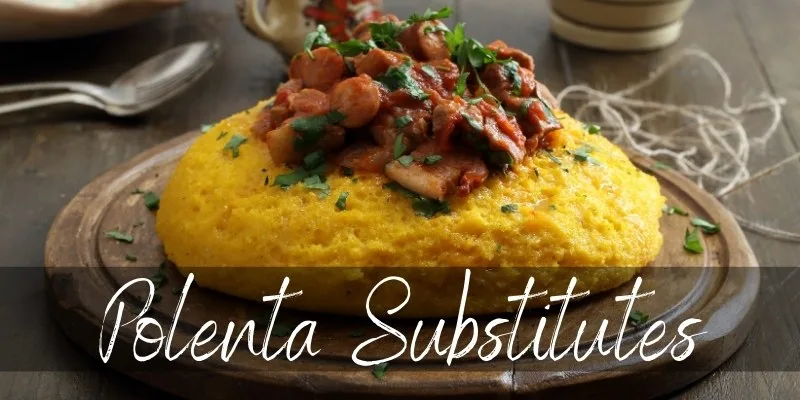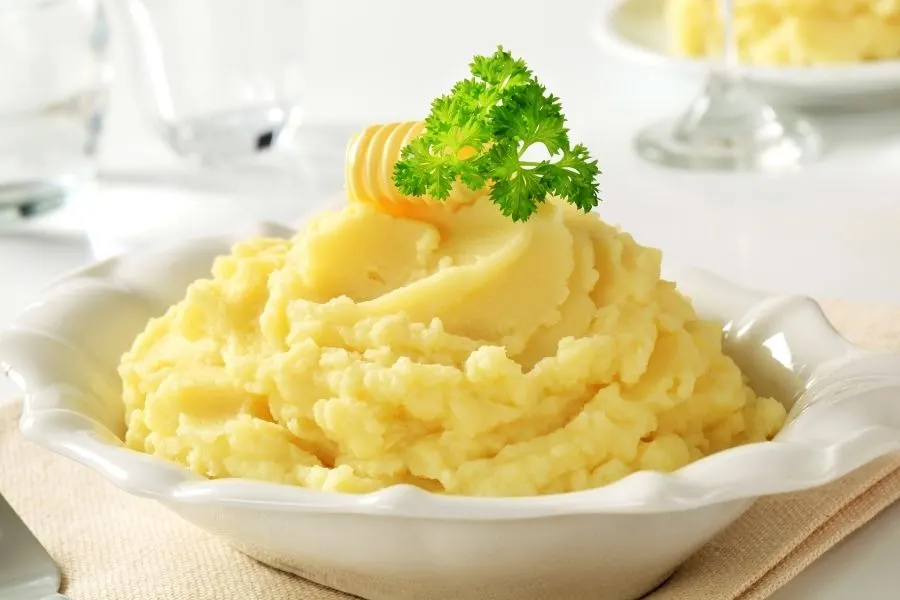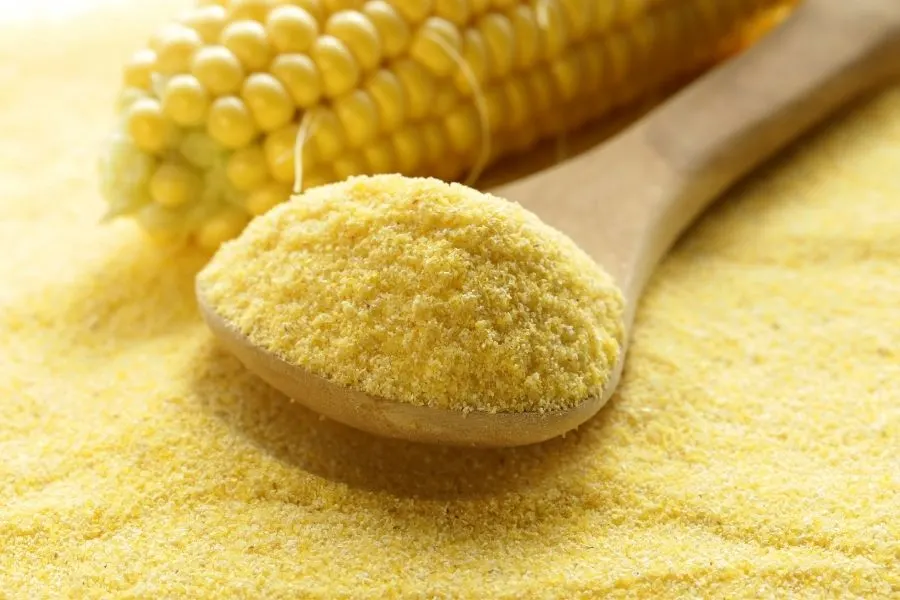If you’re a true foodie, you may be familiar with polenta. But sometimes you need to substitute polenta with something else for various reasons.
Coming from northern Italy, polenta is made out of corn that is coarsely ground. When cooked, it becomes nice and creamy, almost at the consistency of porridge.
It is incredibly versatile and can be used in a variety of dishes depending on the way it is processed.
You can fry polenta, use it in cake, use it in pasta or in the sauce. Because of its creamy texture, polenta can be served on the side too.
In general, polenta is a near equivalent of cornmeal. You would think that any cornmeal or corn flour would be a good substitute for it when you don’t have polenta on hand, but what are some other alternatives we can explore?

Best polenta substitutes
Grits, mashed potatoes, or semolina flour are some of the best substitutes for polenta. They can be used as a substitute for a side dish or a main dish.
Polenta’s adaptability makes it a great companion or even base to any kind of dish.
However, when thinking of a replacement for polenta, you should also take into consideration the way it interacts and reacts with other ingredients in the dish, especially liquid ingredients.
For example, plain flour is not as absorbent as polenta is. If you are baking and are looking for a certain kind of moisture in your cake, then your polenta substitute must also absorb water at the same rate as polenta.
Therefore, plain flour may not be a good alternative to use. Before learning more about polenta and its suitable substitutes, let’s debunk some common misconceptions about it.
Read Also:What Makes Corn Sweet ?
What can be used instead of polenta?
Seeing as polenta is a replacement for many different ingredients, what should you use if it is not available on hand or in stores?
There are plenty of replacements for polenta, but be sure you know exactly what kind of grain your recipe calls for. Here are several most recommended polenta alternatives.
Grits
Polenta and grits are only slightly different from each other. To start, they are made of different kinds of corn. The corn that polenta is made of is yellow, while grits are made of hominy or white corn.
Both can be cooked to the simplest form by putting in boiled water and seasoning to taste. However, grits yield a different end result. They become mushy, whereas polenta will still have a bite to it.
Depending on the dish you are trying to make, you can substitute polenta for grits.
However, if the recipe calls for something a little more solid, then grits are not the replacement for you.
Mashed potatoes
Mashed potatoes are perhaps the closest to consistency and appearance as polenta.
However, they are only a good replacement when used as a main dish or a side. For example, in the above creamy polenta and spinach recipe, it is possible to replace the polenta with mash, but also be mindful that mashed potatoes take more time to make than polenta does.

Semolina
Semolina is an ingredient that is also present in couscous. This produces the same end result as polenta in general, but semolina flour is just not as yellow.
Just like polenta, semolina can also be used in various dishes. However, they can only be used as a polenta replacement in certain dishes, so make sure you check what the recipe calls for and whether your substitutes will work before you start cooking.
Are polenta and couscous the same thing?
When considering the base ingredients of the two items, polenta and couscous are not the same thing and are not normally used in place of each other when cooking.
If you are looking for a gluten-free alternative to polenta, then couscous is not the ingredient to use. Couscous is made of durum wheat or semolina flour, which contains gluten. It has a little more protein than polenta.
When cooked, couscous results in separate granules, which you can still see and feel. Its texture is grainy in the mouth. On the other hand, as aforementioned, polenta is made of corn. When fully cooked, it results in a mass resembling mashed potatoes.
Couscous and polenta will yield completely different forms and textures because they are made of two different grains.
Are polenta and corn flour the same thing?
Another misconception about polenta is that it is the same thing, or it can be substituted with corn flour. This is an understandable mistake because polenta is commonly referred to as cornmeal, especially on products on the supermarket shelves.
However, it is not an equivalent of corn flour even though they are used interchangeably in cooking. Perhaps the greatest difference between polenta and corn flour is actually the slightest difference in the production method.

Polenta is made of dried corn that is ground coarsely, while corn flour is the dried corn product that is ground until it is fine like powder.
Attempting to make polenta with cornflour would result in disappointment.
You can however use cornmeal, which is dried corn that is ground coarser than polenta. The result won’t be as creamy or smooth, but it will work well.
What is polenta used for?
Polenta can be used in a number of different dishes, as aforementioned. It is diverse and can be served on the side, like a pasta, or even used in the cake.
It is allergy-friendly and has many potentials, so let’s have a look at some of the dishes that display the versatility of polenta.
The simplest way to cook polenta
The most basic way to cook polenta is just in boiling water. As a rule of thumb, use four measures of water for every one measure of polenta.
To make your polenta tastier, you can cook it in broth instead of water. Stir polenta in boiling water or broth until the consistency becomes thick.
Add a tablespoon of butter and parmesan cheese, mix it all in, and then season with salt and pepper to taste.
Polenta as fries
Polenta fries are a delicious and popular replacement for regular potato fries. To make your own polenta fries at home:
- Cook your cornmeal in milk, butter, and chicken stock until it reaches your desired consistency.
- Add parsley, cheese, salt, and pepper to add more taste to your fries.
- Cool the polenta mix by spreading it on a baking sheet and slice them up into finger pieces.
- Toss in hot oil until they turn crispy, and voila.
You have yourself a nice bowl of cheesy polenta fries.
Polenta as comfort food
The great thing about polenta is that you can make a dish as complicated and as simple as possible. A good comfort food recipe that uses polenta serves it creamy with spinach. This healthy recipe takes only 5 minutes to make.
There are only three ingredients in this recipe. They are polenta, mascarpone, and spinach. To make your own creamy polenta with spinach, cook your polenta over the stove.
If you are buying packaged quick cook polenta, cook it according to instructions on the package.
Otherwise, follow the general rule of thumb for the simplest way to cook polenta as aforementioned.
Once cooked, stir in your mascarpone and spinach until the vegetables have wilted. Place everything in a bowl and let it cool off before eating. This dish can also be enjoyed with flatbread.
Polenta in a casserole
Polenta is also a great ingredient to use in a casserole. Its mashed potato-like consistency makes it very filling.
You can add practically anything into your casserole, but if you are out of ideas, this is a great breakfast casserole recipe you can try out.
Bear in mind this recipe takes a long time because you will have to refrigerate it overnight so that it is ready to throw in the oven in the morning.
Start by cooking your onions, garlic, thyme, and sausages in a skillet. Then, cook your polenta in a large saucepan with the milk.
Stir until thick and add whatever cheese you prefer. When mixed well, add salt and pepper to taste.
Add everything from the skillet into the polenta, mix well, and then transfer it all onto a baking dish.
Cover the dish and leave it in the fridge overnight. In the morning, you just need to bake it for 25 minutes at 425 degrees Fahrenheit. For the full recipe, see here.
Read Also:Why Is Popcorn A Movie Snack ?
Polenta as pasta
You can get creative by making your own homemade pasta. Create your fresh pasta by using polenta instead of regular flour or durum wheat, as polenta is a popular and common replacement.
To make polenta into actual pasta noodles:
- Mix it with flour and salt in a large bowl.
- Use olive oil and eggs to combine the ingredients together until it becomes a dough.
- When it reaches a good consistency, knead the dough for 5 minutes and let it rest.
After 30 minutes, roll out your dough and cut them into the desired pasta shapes. At this stage, you will have fairly wet noodles.
Leave them to dry until you are ready to cook. When cooking fresh pasta, drop it into boiling water that has been generously salted.
Be wary of overcooking because fresh pasta cooks faster than store-bought dry pasta. Don’t leave it in the water for too long. Drain the water and add any sauce you prefer for a delicious and hearty meal.
Conclusion
There are a few good substitutes for polenta that you can try depending on the recipe you are going for. Many people think semolina and polenta are the same which is not true, but this is a clear sign that they can be substituted for each other.
I hope this article helped you if you are in a situation where you must substitute the polenta with something else.

